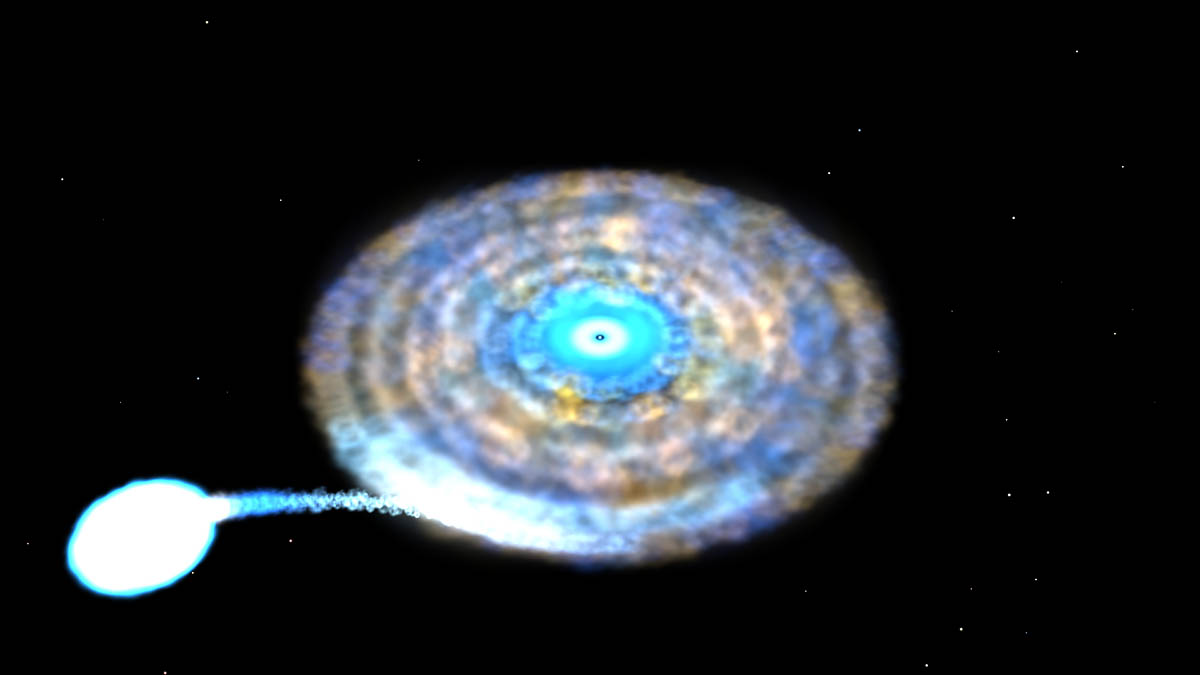The stars of IGR J17062–6143, illustrated here, circle each other every 38 minutes, the fastest-known orbit for a binary system containing an accreting millisecond X-ray pulsar. As they revolve, a superdense pulsar pulls gas from a lightweight white dwarf. The two stars are so close they would fit between Earth and the Moon. (NASA’s Goddard Space Flight Center)
Home The stars of IGR J17062–6143, illustrated here, circle each other every 38 minutes, the fastest-known orbit for a binary system containing an accreting millisecond X-ray pulsar. As they revolve, a superdense pulsar pulls gas from a lightweight white dwarf. The two stars are so close they would fit between Earth and the Moon. (NASA’s Goddard Space Flight Center) The stars of IGR J17062–6143, illustrated here, circle each other every 38 minutes, the fastest-known orbit for a binary system containing an accreting millisecond X-ray pulsar. As they revolve, a superdense pulsar pulls gas from a lightweight white dwarf. The two stars are so close they would fit between Earth and the Moon. (NASA’s Goddard Space Flight Center)
The stars of IGR J17062–6143, illustrated here, circle each other every 38 minutes, the fastest-known orbit for a binary system containing an accreting millisecond X-ray pulsar. As they revolve, a superdense pulsar pulls gas from a lightweight white dwarf. The two stars are so close they would fit between Earth and the Moon. (NASA’s Goddard Space Flight Center)


